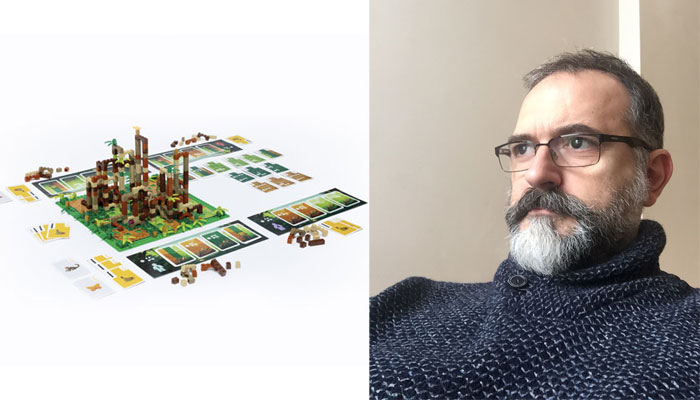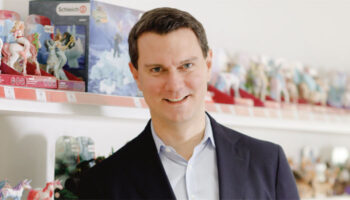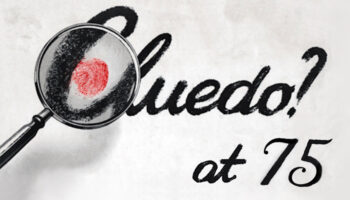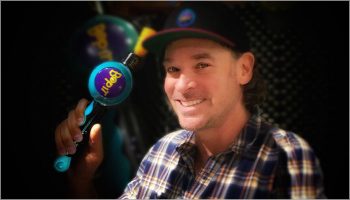LEGO’s Jaume Fabregat on why the time is right for LEGO to return to board games

Jaume, it’s great to connect. We’re here to talk about LEGO’s collaboration with Asmodee on Dotted Games – a new studio devoted to producing LEGO board games. LEGO’s previous foray into this sector – LEGO Games – is still looked back on fondly by plenty of gamers and LEGO fans. Why is now the right time for LEGO to return to board games?
To answer this question properly, we need to rewind a bit back in time… LEGO Games wasn’t the first instance of the LEGO Group entering the board game category; the very first LEGO board game dates back to 1948.
Oh really!?
Yes! It was a game published in collaboration with the Danish Transport authorities to educate kids on road safety. In fact, over the past few decades, the LEGO Group has published multiple board games in various formats.
That said, in early 2019, our team initiated an internal project to explore whether we should dedicate more attention to board games. Since 2009, the LEGO Group had only released a few LEGO versions of classic games like chess, tic-tac-toe, or parcheesi. Many of us within the LEGO Design organisation truly believed there was still room for innovation in board games.
We decided that if the LEGO Group was to publish board games again, we would need a compelling reason… An idea present from the very beginning of ideation was that LEGO brick building must be a core part of the play; the LEGO System in Play must be integrated into the board game mechanics and then… COVID arrived.
Ah.
In less than 24 hours, we were all secluded at home… But, in some countries, the lockdown coincided with the airing of the LEGO Masters TV show. Suddenly, entire families were sitting around the TV, watching people build with LEGO bricks and feeling inspired to build with LEGO bricks themselves.
We soon agreed that we would create a LEGO board game with game mechanics based on the capabilities of the LEGO System in Play, for the families who enjoy sitting around the table to build with LEGO bricks. The reward wouldn’t be based on skill, but instead, it would be a game of strategy, decided by who made the best use of the LEGO system to win the game.
Next, the big question arose: who should we collaborate with to achieve this vision? It was then that we decided to reach out to our good friends at Asmodee to help nail the game concept.
How would you describe some of the key differences between what LEGO in 2009 with LEGO Games and what LEGO and Asmodee are now doing with Dotted Games?
Well, LEGO Games back in the day featured the beautiful LEGO Dice. Sadly, the mold is no longer in production, so we had to move ahead without it! Some of the old games offered a clearly differentiated experience, one part involving the building of different models that would then be used as board game props. In fact, with a bit of care, players would never need to build them again.

In our case with Dotted Games, we aimed to integrate the vast number of construction possibilities of the LEGO System in Play into the core game mechanics. If players enjoy LEGO building, we want them to be constantly building, unbuilding and rebuilding with the bricks. Our goal was to make a board game where players enjoy the endless possibilities the LEGO system.
For example, with Monkey Palace, players will receive a handful of LEGO bricks that should be used to rebuild the collapsed palace. Nobody knows what the ancient palace looked like; and the only help is the little monkey living there. While sometimes the monkey may be more of a hindrance than a helpful hand, it will reward the players the higher they build.

Yes, let’s dive into Monkey Palace. Can you talk us through the development process from LEGO’s side?
To answer this properly, once again we’ll need to go back in time because Monkey Palace is not the first game we have developed with Asmodee.
In 2022, the LEGO Group celebrated its 90th anniversary. To celebrate, we teamed up with Zygomatic – an Asmodee studio – to create the LEGO Group’s ‘90 Years of Play’ version of the popular game, Timeline. The LEGO version included cards based on the company’s history, with different levels of difficulty, competitive and cooperative play modes, and even a glossary to explain the events on the cards. The game was produced as a limited edition exclusive gift for LEGO employees only, who received their copies as part of the 90th-anniversary celebration.
Developing a range of products in partnerships between big companies is always a long process of aligning work cultures and strategic visions. With Asmodee, the process was extraordinarily smooth; often, we found ourselves in rooms filled with talented individuals… LEGO colleagues who love to play board games, and Asmodee people with a passion for LEGO building.
This time, the chosen Asmodee studio to work with the LEGO Group was Bezzerwizzer Studio. From the very first time I met Birgitte Bülow – the studio’s CEO – we were conscious that our product vision was specific in terms of experience objectives, but extremely open and flexible about the path to reach that goal. This is why we quickly agreed to openly share that vision to find the right concept from an external game author instead of relying on in-house development.
So that’s how you connected with the inventors of Monkey Palace, David Gordon and Tin Aung Myaing – better known as TAM?
Yes. working together we soon met David and TAM. The initial concept they presented had a couple of mechanisms that immediately resonated with the kind of experience we were looking for. At this point, the entire design team at Bezzerwizzer Studio became involved, and everything began to progress quickly. David and TAM are great game designers and the team at Bezzerwizzer Studio had a wealth of necessary expertise to move the game development ahead.

And what was your role in shaping the game?
In the big picture of the partnership between the LEGO Group and Asmodee, my role involved developing and executing the strategic vision for the entire LEGO Games portfolio. This encompassed crafting the future vision of the portfolio, leading creative oversight in the LEGO play experience, establishing experience quality benchmarks and setting objectives to align our partners with the LEGO mission of inspiring the builders of tomorrow.
When is time for game design, my job, in most cases, is to be a fly on the wall and let experts do their work.
Are there any guiding principles that helped to ensure Monkey Palace is an authentic LEGO experience, as well as a great game?
The main guiding principle when developing Monkey Palace was to ensure that LEGO Games offer a fun family social interaction; a play experience that brings together different generations around the table and enables them to have a good time playing together. There are multiple ways this can be done, but one of the ways we did this with Monkey Palace was through subtle tongue in cheek humour, which is often so iconic to LEGO products.

The other thing we kept in mind throughout was innovation. We had to think outside the box throughout the entire process, but our levels of innovation were particularly pushed when trying to integrate the concept of our beloved Building Instructions into the traditional game rules booklet.
The team took the essence of the LEGO Building Instructions’ step-by-step guide and used it as inspiration for the game rules, creating a new ‘code of laws’ on how to build and measure the impact of the player decisions in the game. This helps empower the user through their choices at building. It was a hugely innovative move from both the LEGO Group and from a board game perspective alike.
Sounds fantastic. I also wanted to ask… Board Games Lead at the LEGO Group sounds like one of the best jobs in the industry! What set you on the path to working at the LEGO Group?
Firstly, thank you! I think your comment really captures the exciting vision shared by many of us when we merge the concepts of LEGO play and board games. The idea of combining LEGO building with board game play instantly ignites a sense of playfulness and fun creativity.
My journey to the LEGO Group traces back to the late Eighties, when I started my career as an artist for a foreign edition of the RPG Traveller by GDW. In the Nineties, the digital revolution exploded, the dot-com bubble pushed internet at a global scale and the digital transformation was about to impact all industries and aspects of daily life. My career developed across this digital disruption, in the intersection between advertising, video games and board games. For instance, in early 2000s, I worked at Games Workshop to set up their first presence online, I was in game development in the Facebook Gaming explosion in late 2000s, to later move into mobile gaming with the advent of iPhone and iPad.
I suppose this experience in projects combining play and tech transformation paved my way to be hired in 2015 at the LEGO Group’s research and development branch, the Future Lab. At the LEGO Group’s research and design division, our focus is on exploring how technological advancements shape the future of the LEGO play experience. Over time, I transitioned into different roles within LEGO Design, always in projects exploring the evolution of the traditional LEGO experience, and the intersection between physical and digital play.
Last question! How do you fuel your creativity?
Watching people! I’m a city dweller grown in a Mediterranean city. Sitting on a terrace, sipping an espresso coffee and observing life unfolding around you is a national sport there, and I always find it extremely inspiring.
Let’s be honest, at the end of the day, like in any other job, there are good days and bad days at work. When I have a bad day, I take an hour break and go to the LEGO House in Billund. I walk around the experience areas where visitors – both kids and adults – build in pools of LEGO bricks. Watching those bright happy faces, you can see they will remember that moment. When you see that, you realise you are doing something good for the people and the bad mood goes away. Time to go back to work!
Brilliant answer. Thanks again Jaume – and good luck with the launch of Monkey Palace and Dotted Games.
–
To stay in the loop with the latest news, interviews and features from the world of toy and game design, sign up to our weekly newsletter here

























